Tool Description
- The primary Lumerical MODE feature is the "eigenmode solver". This tool is used to design, analyze and optimize guided wave components, such as silicon photonic waveguides, Fiber, Photonic crystal fibers and waveguides.
- We use FDE solver from Lumerical MODE to engineer the dispersion of PCF.
- Lumerical MODE also includes solvers for simulating the propagation of optical fields. There are two solvers: a) 2.5D Finite Different Time Domain method, and b) Eigenmode Expansion method. These are used to simulate, design and optimize photonic components.
- We make use of Lumerical Mode to calculate the dispersion, Loss, and effective area of photonic crystal fiber based on this paper
- [1] M. Ebnali-Heidari, et.al, “Proposal for Supercontinuum Generation by Optofluidic Infiltrated Photonic Crystal Fibers,” IEEE Journal of Selected Topics In Quantum Electronics, vol. 20, no. 5, 2014.
In recent years, photonic crystal fibers (PCFs) have attracted a great deal of attention in various applications. One of the most promising applications of photonic crystals is the possibility of creating compact, high speed, high bandwidth, and low power integrated optical devices by means of photons as the carriers of information
A PCF is a two-dimensional photonic crystal, possessing a central defect region surrounded by multiple air holes (tubes) devised in parallel along an optical fiber. Compared with conventional optical fibers, PCFs have unique properties, capable of being tailored to possess nearly zero dispersion. This has been achieved by engineering the PCF geometry, resulting in sophisticated designs that typically require nano-scale technological precision. Our focus in this report for dispersion engineering is based on the optofluidic using Lumerical Mode. In a meticulous manner, due to their intrinsic porous nature, photonic crystal (PhC) devices infiltrated with microfluids have demonstrated tunable and reconfigurable optical properties. Furthermore, selective liquid infiltration of individual air pores of a planar PhC lattice has shown to extend the number of opportunities associated with this optofluidic platform.
The goal of this section is to investigate the possibility of tailoring the dispersion profile of a PCF as desired for designing either a dispersion shifted (DSF) fiber or a dispersion flattened fiber (DFF), by means of selective optofluidic infiltration of PCF air holes Using Lumerical Mode. In doing so, we have considered a solid core PCF that consists of circular air holes of diameter arranged in a triangular lattice of constant, as depicted in Figure 1(a). For detail, please see ref [1]. The air-hole lattice forms six hexagonal rings co-centered with the solid core. Figure 1 illustrates the case for which the air holes forming the inner most ring is infiltrated by an optofluidic of refractive index nf. The white and dark circles in Figure 1 represent the un-infiltrated and selectively infiltrated air holes, respectively
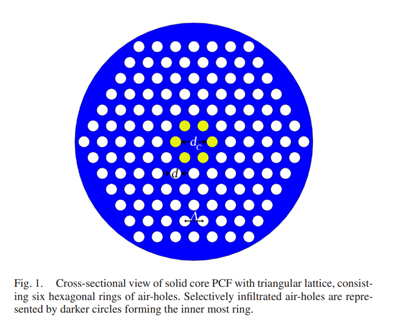
In the Lumerical Mode
- we build circle as a core of fiber
- We make use of the structure properties from group menu to create the photonic crystal
- We put in the first ring
- We employ the FDE solver
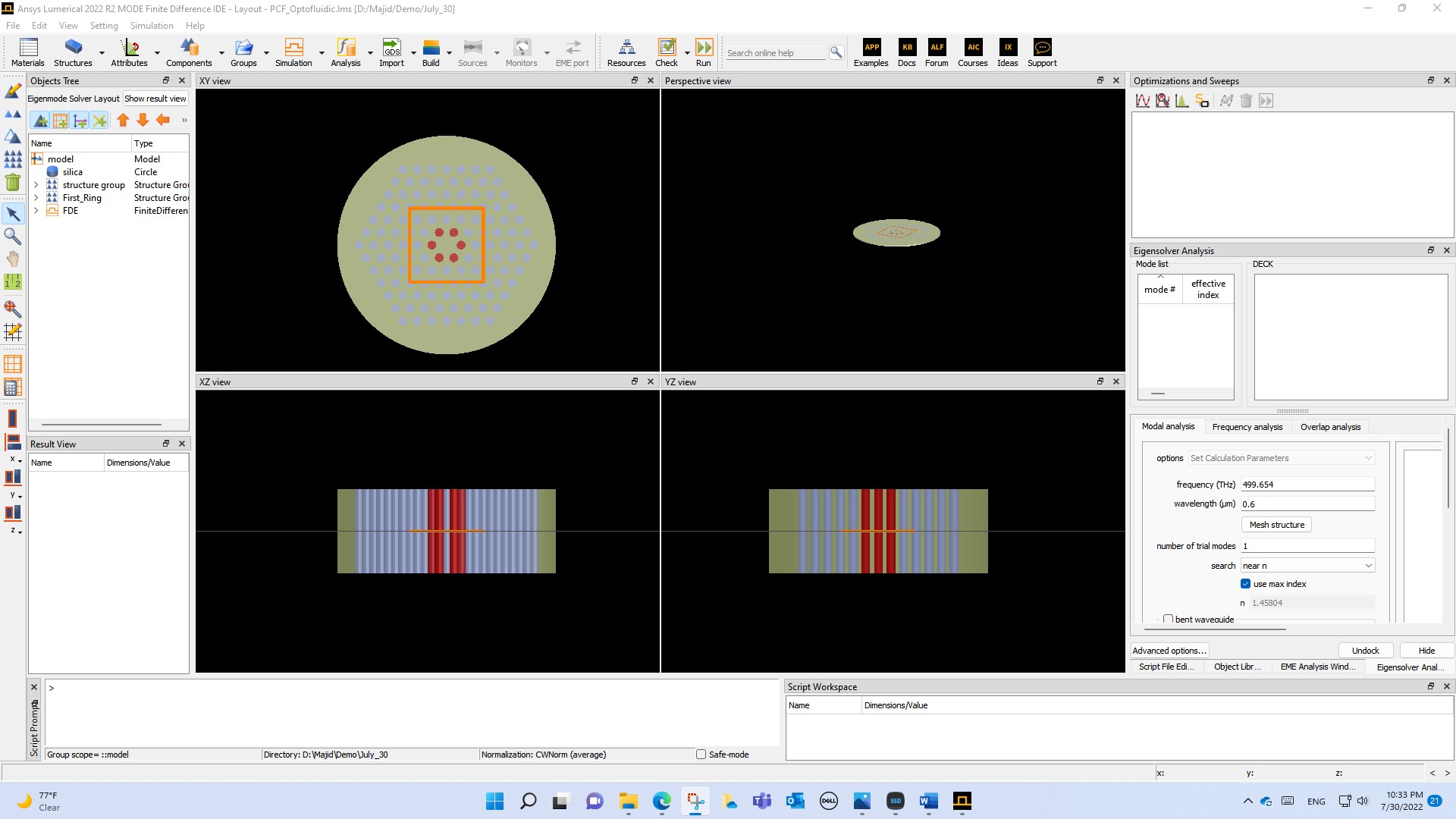
The contribution of material dispersion of silica fiber in the effective index is calculated using the four-term Sellmeier formula.
In the Lumerical Mode it can be done in the material properties section.
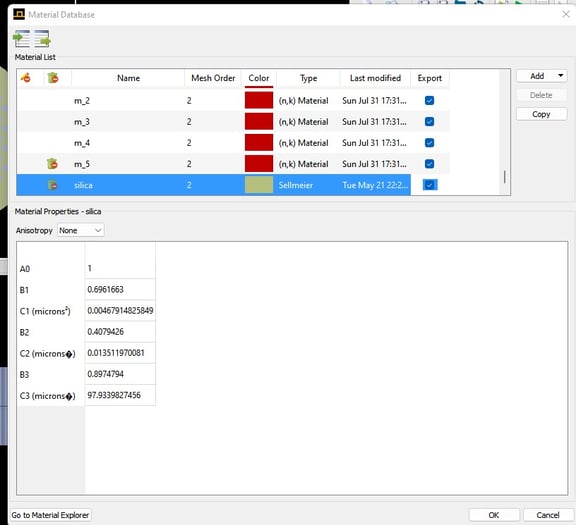
Next, we run the simulation.
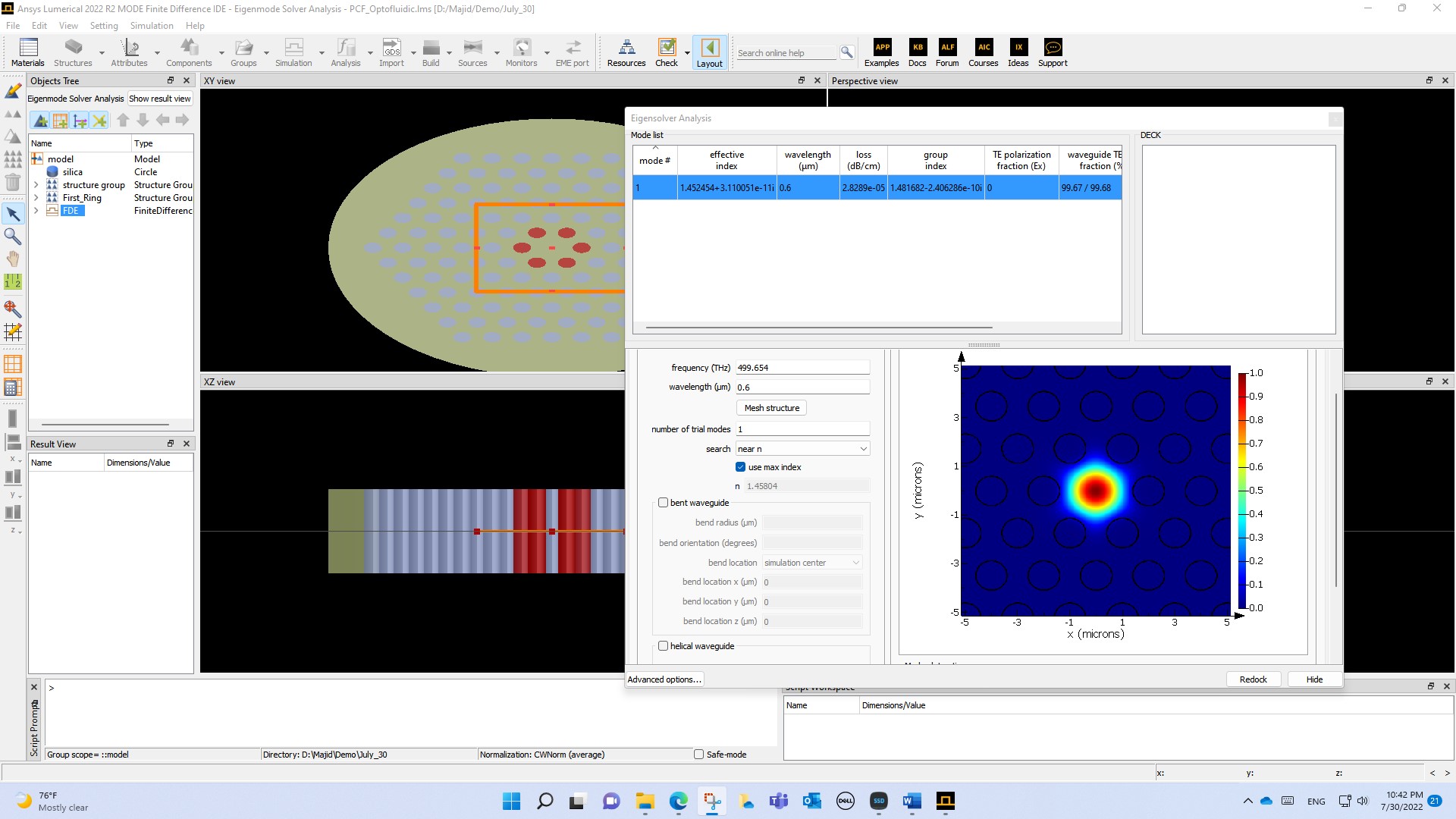
In order to investigate the dispersion properties of the PCF, authors of ref [1] employed the full-vectorial plane wave expansion (PWE) method. The dispersion is calculated by:

But Lumerical mode simply do the dispersion.
In order to investigate the influence of the infiltration on the PCF dispersion properties, at first, we compare the dispersion profile for the fundamental mode of the un-infiltrated PCF of Figure 1 with those of the PCF in which the most inner ring is assumed to be infiltrated with various optical fluids. We compare the numerical results for ref [1] and output of Lumerical Mode.
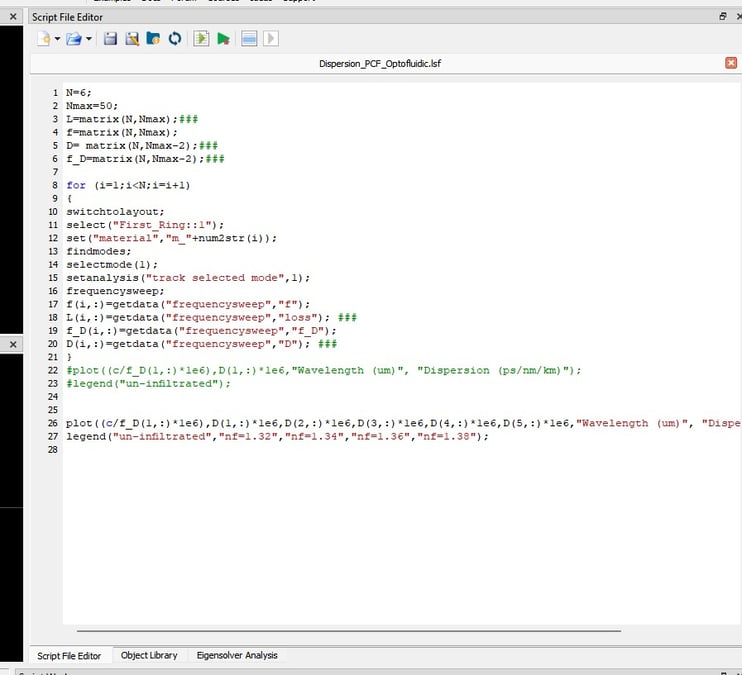
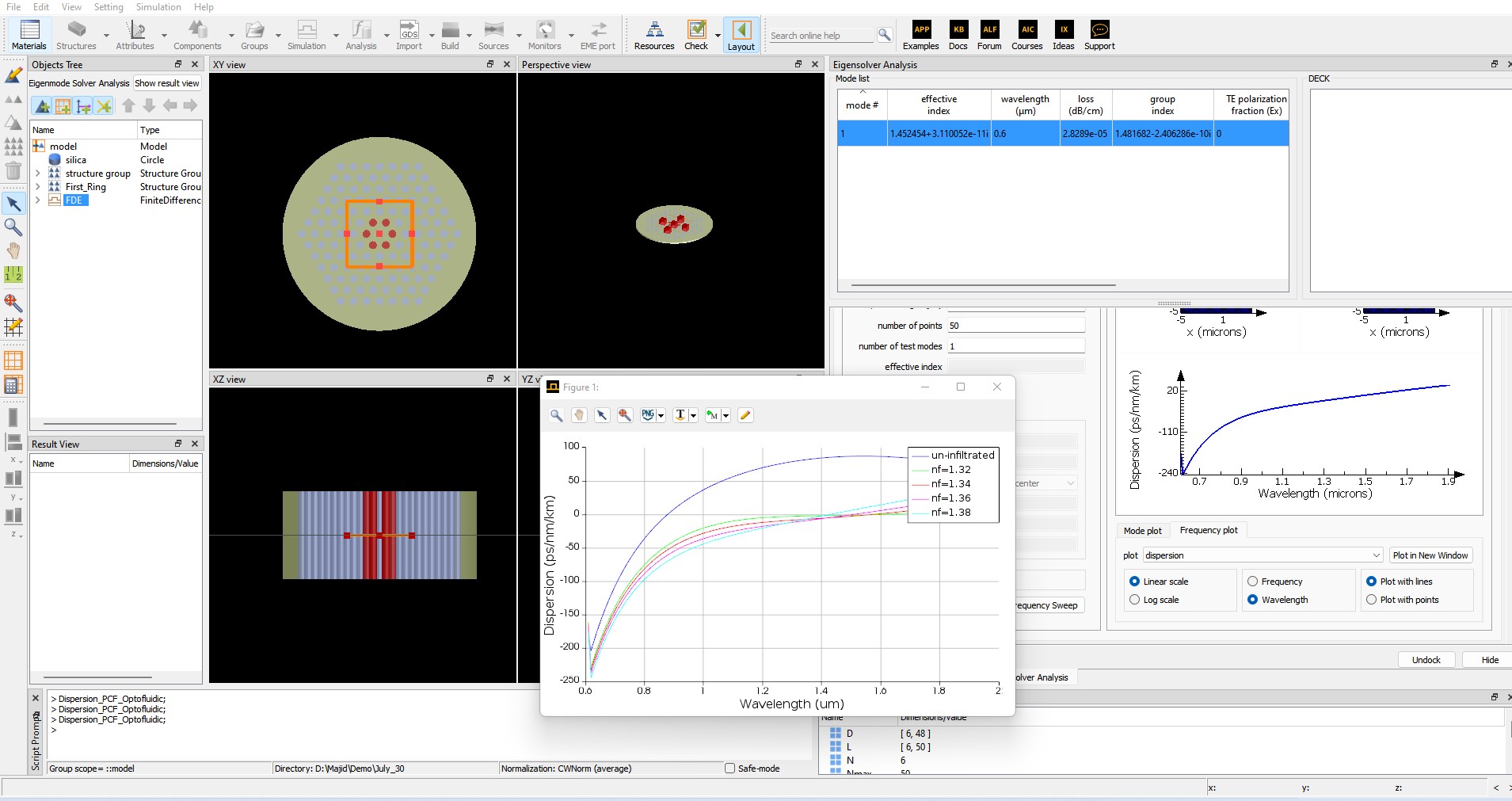
This is the output of Lumerical Mode.
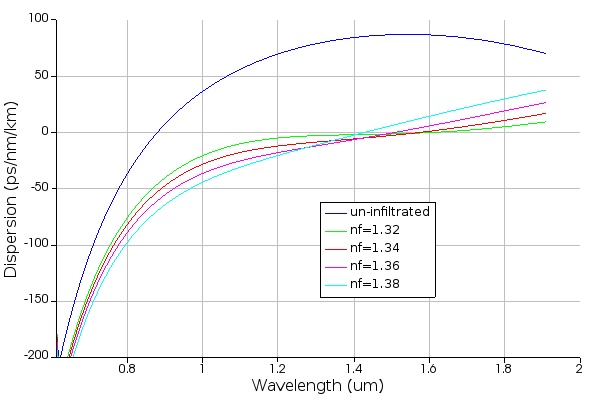
This is extracted from ref [1]
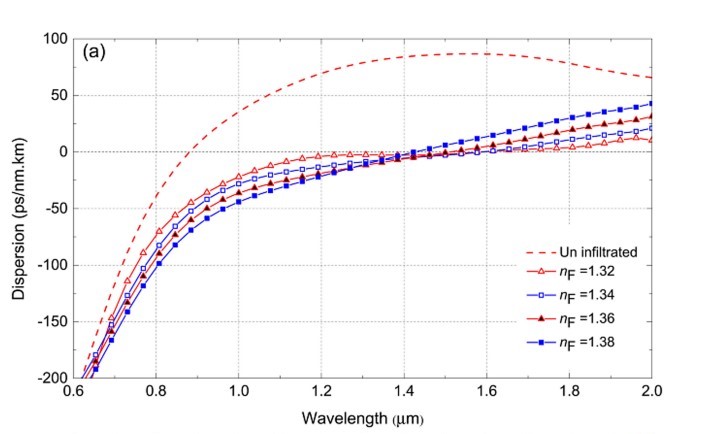
Comparison of the (a) dispersion profile of Lumerical Mode (b) dispersion profile of ref [1] of the un-infiltrated PCF with those of selectively infiltrated with optical fluids of various indices (1.32 ≤ nF ≤ 1.38).
Next, we can calculate the modal effective area. I have compared the output of Lumerical Mode and ref [1].

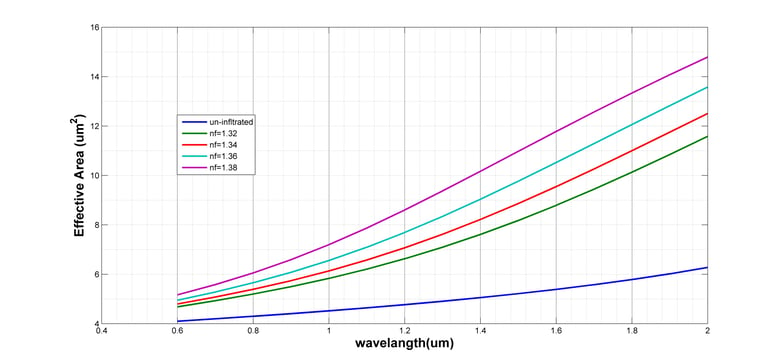
output of Lumerical Mode
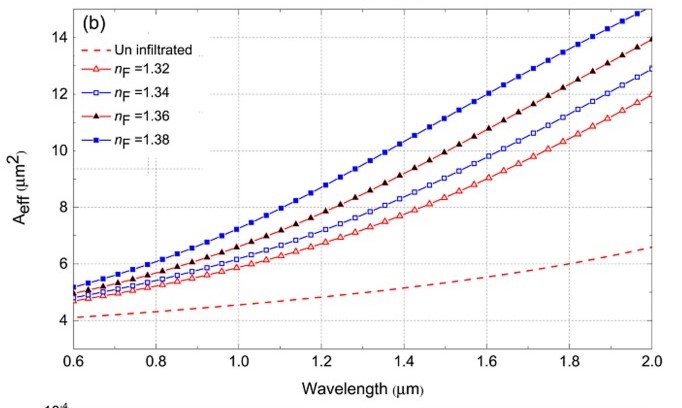
output of ref [1]
Comparison of the (a) effective area profile of Lumerical Mode (b) dispersion profile of ref [1] of the un-infiltrated PCF with those of selectively infiltrated with optical fluids of various indices (1.32 ≤ nF ≤ 1.38).
Finally, the comparison shown in this report reveals that both methods, Lumerical Mode and full-vectorial plane wave expansion (PWE) which is written by MATLAB code have excellent compatibility. Thanks for Lumerical Mode.Aug 1, 2022 12:42:29 PM
